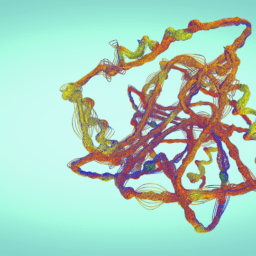This month, researchers working as part of the Parkinson’s Progression Markers Initiative published the results of a long-term study in The Lancet. The research team announced that the use of an α-synuclein seed amplification assay called Syn-Tap can differentiate between people with Parkinson’s and those without Parkinson’s, aid in describing sub-groups of Parkinson’s, and identify people at risk of developing Parkinson’s. This means there is officially a Parkinson’s biomarker.
The publication of these results was widely reported upon and has generated significant excitement. This post will provide an overview of the study’s findings and provide some context for the excitement. We have previously discussed the importance of discovering and validating biomarkers for Parkinson’s in this post.
Who was involved in this study?
The study was funded by the Michael J. Fox Foundation and associated partners. The research occurred at study sites in North America, Europe, and Israel. The 1,123 participants in the study were enrolled between 2010 and 2019.
Participants included people with Parkinson’s with and without associated genetic variants, healthy controls, and people at risk for developing Parkinson’s due to prodromal symptoms or due to their carrier status for genetic variants.
What did the study investigate?
This study investigated how reliably α-synuclein seed amplification assays could find misfolded α-synuclein, which is a hallmark of Parkinson’s pathology, in samples of cerebrospinal fluid of study participants.
What is an α-synuclein seed amplification assay?
A seed amplification assay uses “seeds”—in this case, examples of normal α-synuclein that were treated so they would glow—to amplify the presence of another substance in a sample—in this case, the α-synuclein from the samples collected from study participants. Essentially, because misfolded α-synuclein causes clumping of α-synuclein, researchers mixed fluorescent but otherwise “normal” α-synuclein to highlight whether the study participant’s cerebrospinal fluid contained misfolded α-synuclein that caused clumping.
what were the results?
The study found that the seed amplification assays were highly accurate at identifying people who had Parkinson’s.
The study’s most significant findings include that the Syn-Tap test was:
- 98.6% effective at identifying samples from people with Parkinson’s who experienced an abnormal sense of smell
- 96.3% effective at identifying normal samples
- 87.7% effective at identifying samples from people with Parkinson’s
Other key findings include:
- 86% of prodromal participants, who exhibited REM Sleep Behavior Disorder (RBD) or an abnormal sense of smell but no other signs of Parkinson’s, had abnormal α-synuclein
- 78.3% of participants with sporadic Parkinson’s but a normal sense of smell had abnormal α-synuclein
- 67.5% of participants with LRRK2 variants had abnormal α-synuclein
- 34.7% of participants with LRRK2 variants but a normal sense of smell had abnormal α-synuclein
- 8% of participants who had a genetic variant associated with Parkinson’s but no Parkinson’s symptoms had abnormal α-synuclein
The study authors note a few other key findings, including that:
- Within the group of people with Parkinson’s and LRRK2 variants, there are differences in age, sex, and motor performance that are associated with α-synuclein status. This includes the finding that, among the LRRK2 cohort, females were less likely than males to have abnormal α-synuclein. This suggests that even if symptoms are similar, there may be different pathological mechanisms in LRRK2 Parkinson’s depending on whether there is normal or misfolded α-synuclein present.
- People with prodromal symptoms and people who have genetic variants but no other symptoms of Parkinson’s demonstrate abnormal α-synuclein aggregation before other detectable signs of Parkinson’s, including alterations in DAT imaging.
- The prodromal period in Parkinson’s might be longer than had been projected previously and might start earlier than changes in dopamine system functioning are experienced.
Why are these results important?
Here are the five most important changes that will result from this study:
- Because this trial has confirmed biological differences between subgroups of people with Parkinson’s, we will be able to group people together more effectively in clinical trials. This is just one way that, as the seed assay is incorporated into clinical trials, there will be improvements to how we evaluate the efficacy of treatments.
- Now that research has confirmed a test’s ability to distinguish between people who have Parkinson’s and those who do not, researchers can further optimize the test to assess the progression of Parkinson’s. This will aid in developing treatments that can slow progression.
- Trials for disease modification will be able to include participants who do not display any motor or non-motor symptoms of Parkinson’s. This will help evaluate a treatment’s ability to prevent a person who is at high risk for Parkinson’s from developing the symptoms of Parkinson’s. Trials that use this seed assay test in attempting to prevent the development of Parkinson’s may begin in as little as two years.
- Experts have already begun work on a proposed revision of staging guidelines as a consequence of this research. This will further influence changes to inclusion and exclusion criteria for clinical trials.
- Diagnosis of Parkinson’s will be faster and more reliable. In particular, this test is highly specific to Parkinson’s and can help to distinguish between Parkinson’s and those Parkinsonisms that involve α-synuclein.
It is important to note that the test used in this trial (the Syn-Tap test) is available today through your doctor, but if you already have a diagnosis of Parkinson’s and you and your movement disorder specialist are confident in that diagnosis, this test may not provide much value to you at present. If, however, your diagnosis is uncertain, talk with your movement disorder specialist about whether this test may be appropriate for you. Note that this test is not presently covered by insurance and that it requires a lumbar puncture.
While the most immediate use for this seed assay test will be to aid in diagnosing Parkinson’s more reliably, the trial authors write that, collectively, the study’s findings have “immediate implications for clinical trial design, both to identify pathologically defined subgroups of people with Parkinson’s disease and to establish biomarker-defined at-risk cohorts.” As a consequence of the findings of this study, trials will become faster, less expensive, and, ultimately, the results of the trials will be more reliable.
Additional Resources
Proposal for a Biological Staging System in Parkinson’s Disease
WANT MORE PRACTICAL ARTICLES LIKE THIS?
You can learn much more about living well with Parkinson’s today through our Every Victory Counts® suite of resources. Each manual is packed with up-to-date information about everything Parkinson’s. Click the link below to order your manual(s).
Thank you to our 2023 Peak Partners, Amneal, Kyowa Kirin, and Sunovion, and our Every Victory Counts Gold Sponsor, AbbVie Grants, for their ongoing support of these must-have manuals. Additionally, we’d like to thank Barbara and Dale Ankenman, Abby and Ken Dawkins, Bonnie Gibbons, Gail Gitin in loving memory of Gene Gitin, Irwin Narter, and Lorraine and J Wilson for their generous donations that allow us to make these resources available and free to all.

















